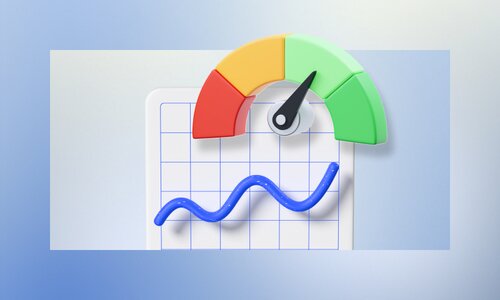For many, the concept of an Individual Retirement Account (IRA) can be confusing. What is an IRA? How does it work? And how can it benefit real estate investors?
In this article, we’ll attempt to answer all those questions and more. So whether you’re a first-time home buyer or a seasoned investor, read on to learn everything you need to know about IRAs!
What is an IRA?
Social Security isn’t enough to cover the majority of your financial needs during retirement. Most people need additional savings or pension plans to support their needs in their golden years.
The Employee Retirement Income Security Act of 1974 introduced Individual Retirement Arrangements (IRAs) to encourage people to save for retirement. Initially, these were restricted to people without an employee-sponsored pension plan, but it’s since been expanded for anyone looking to put funds aside specifically for their retirement.
Today, IRAs empower people to make tax-deferred investments for retirement savings. It’s an excellent way to ensure your finances are taken care of in the future. IRAs come in various types to help meet your personal savings needs.
What types of IRAs are available?
By understanding the different types of IRAs, you can decide which retirement plan works best for your personal goals.
Traditional IRA
A traditional Individual Retirement Account (IRA) is a long-term savings plan allowing you to save for your retirement while offering tax benefits. The traditional IRA allows personal contributions to grow on a tax-deferred basis until they are withdrawn, providing extra savings over time. The IRS considers some contributions tax-deductible depending on your income and filing status. Anyone can open a traditional IRA, whether self-employed, a government worker, or with a privately held company.
Roth IRAs
Roth IRAs allow certain kinds of contributions to be made with after-tax dollars and enable qualified distributions to be tax-free. Like the traditional IRA, anyone can open it regardless of how you are employed. What you contribute is not deductible from your federal income taxes. You can keep contributing even after you turn 70 and 1/2 or leave money in the account as long as you live.
Payroll Deduction IRA
The Payroll Deduction IRA is a plan set up by an employer where employees can contribute to their individual retirement accounts (either traditional or Roth). A business of any size can establish this kind of program so that small business owners or large corporations can use it.
Simplified Employee Pension (SEP)
SEPs are employer-sponsored retirement plans allowing employers to contribute to their employees’ IRAs. The company can contribute up to 25% of an employee’s pay, and the employee is always 100% vested in the SEP-IRA money.
SIMPLE IRA
Standing for Savings Incentive Match Plan for Employees, the Simple IRA allows employees to make salary-reduction contributions to which the employer can match or make non-elective contributions.
How do IRAs work?
IRAs are easy to set up. Many banks and brokerages offer IRA accounts; you can open one for as little as $250. Some accounts are more hands-off, where advisors and artificial intelligence (AI) decide where to invest the funds. Other accounts are more full-service with a range of investment options. These may charge commissions or fees for their services.
IRAs invest your annual contributions in various options like index funds, mutual funds, exchange-traded funds (ETFs), stocks, and bonds. You can make choices within your investment account for the approved funds. They may sound similar to brokerage accounts, but there are caps to the amount you invest. And, in a brokerage account, you’ll pay taxes on capital gains, interest, and dividends for the tax year.
To open an IRA account, you must provide information such as your Social Security and proof of citizenship or residency.
Once your IRA account is open, there are a few things you need to know about how they work.
While these are a great way to save for retirement, there are contribution limits. Each year, the IRS stipulates the total contributions you can make to traditional and Roth IRAs. In 2023, the income limits were $6,500 for those 49 and younger or $7,500 for people aged 50 and older when contributing to a traditional IRA. Roth IRA limits depend on your tax filing status and earned income.
The IRA contribution limits don’t apply to rollover contributions, which we’ll explain below.
Individuals 50 and over can also make catch-up contributions of up to $3,500 for 2023 to a SIMPLE IRA or $1,000 for a traditional or Roth IRA. The IRS has specific qualifications for making these contributions that you’ll want to explore if you are at or above the age limits.
Otherwise, any excess contributions are taxed at 6% a year for each year. That extra amount stays in the IRA. You can avoid this by withdrawing the excess and any income earned on the excess before your individual income tax return is due.
What is an IRA rollover?
A rollover occurs when funds are moved from one retirement account to another, like from an IRA to a retirement plan or a retirement plan to an IRA. Moving these assets around is also called an IRA conversion.
Rollovers and conversions are done so that money can be accessed without being taxed or incurring an early withdrawal penalty. It can also be done to avoid paying higher taxes in the future. For example, if you think you’ll move into a higher tax bracket in the future, converting into a Roth IRA and paying taxes now could save you money.
Essentially, strategic rollovers continue tax-advantaged savings and grow your retirement wealth.
The IRS limits rollovers to one per year, with a few exceptions like IRA-to-plan rollovers or trustee-to-trustee transfers.
The most common types of IRA rollovers are 401k-to-IRA and traditional IRA-to-Roth IRA transfers. To move funds from one retirement account to another, you will need to complete a direct rollover form. You can also apply for a 60-day rollover or a trustee-to-trustee transfer.
If you don’t roll over into another IRA, the IRS can withhold a percentage of the distribution for taxes.
The benefits of having an IRA account
When properly structured, IRA accounts offer significant advantages over traditional savings accounts or investment plans by reducing taxes paid on saving and investment contributions from a tax return. That’s why they are considered tax-advantaged investments.
Roth IRA contributions cannot be deducted from your individual federal income tax, but traditional IRA contributions can. How much you can deduct depends on whether you or a spouse have a retirement plan and how much you make in a year. You can deduct your full contributions if you don’t have a retirement plan from your place of employment.
Additionally, many financial institutions offer IRA savings products with favorable interest rates and no or low-cost withdrawal and transaction fees.
With so many potential tax savings and financial gains, an IRA is worth considering if you’re thinking ahead to your retirement years.
How do I access funds in my IRA?
Accessing funds in your IRA is relatively simple. You must have reached the age of 59 1/2 to make withdrawals without paying a 10% early-withdrawal penalty from the IRS. You don’t need to start taking distributions at this age, but you must begin when you turn 72. If you don’t start withdrawing by then, you might owe a 50% excise tax.
Your IRA will have a required minimum distribution (RMDs) that must be deducted from your account each year. Exactly what this amount is can be figured out using one of the IRS’ withdrawal worksheets. Which worksheet you use depends on different scenarios, like marital status or your spouse’s age. There is a different worksheet for inherited IRAs if you are a beneficiary.
You are welcome to withdraw more than the minimum, but any monies you take out will be considered taxable income unless it was taxed before or is a qualified distribution from a Roth IRA.
If you need to access funds prior to retirement age, you can do so without incurring a penalty if the withdrawal is for qualified expenses, like higher education or medical expenses. For example, the qualified reservist distribution is a penalty-free withdrawal option for members of the military reserves who are called to active duty. You’ll still owe federal and state income taxes but won’t incur the early withdrawal penalty. Or, you can use the funds to pay medical bills after you’ve lost your job. Some IRAs offer the ability to take out a loan as long as that loan is paid back to the IRA.
The IRS publishes a list of the hardships and scenarios that qualify for early IRA withdrawals without being penalized.
Otherwise, you will be subject to the 10% early-withdrawal penalty and all applicable taxes if you withdraw before 59 1/2.
How can IRAs help real estate investors specifically?
For real estate investors, IRAs can provide flexibility with investing, leading to more wealth over time. In addition to how tax-deductible contributions can be made to reduce taxable income, real estate investors can leverage a self-directed IRA to purchase real estate.
Yes, you can also use an IRA to purchase a rental property and collect passive income.
To buy real estate with your IRA, you’ll need to use cash or rollover funds into the IRA and then purchase the real estate. The purchase requires a custodian or an entity specializing in self-directed accounts that can manage the transactions and financial reporting so you stay compliant with the rules around this kind of purchase.
To be clear, you won’t own the property–the IRA will. And you can’t use the property for personal use at all. No vacation homes, second homes, or personal business offices. It is solely an investment property.
The rental income will be tax-deferred and reinvested into the account, allowing you to continue growing your wealth without paying taxes on the dividend or capital gains from the investments. However, it also means you won’t receive property tax deductions or write-off depreciation on your income tax. The bright side is that you also won’t be on the hook for the management and maintenance costs of the property, as that is paid for by the IRA.
When you want to sell the property, notify the custodian that you want them to sell the property on behalf of the IRA. Any profit goes back into the IRA and could be tax-deferred or tax-free.
Investing with IRAs
Overall, an IRA is an efficient and secure investment vehicle, helping individuals from all walks of life prepare for their financial future. It is worth considering your IRA account when investing in real estate. Not only does it add a layer of safety, but it also grows your financial wealth for retirement through rental income and flipping houses.
Do more research and consult with financial advisors to decide if opening an IRA suits you. As always, seeking tax advice from a qualified professional is best.
After considering all the information we just reviewed about IRAs, it’s worth looking into what properties you could find with your newfound knowledge! So start searching for homes today and see how an IRA can help you reach your investment goals.
The opinions expressed in this article are for general informational purposes only and are not intended to provide specific advice or recommendations for any individual or on any specific security or investment product. The views reflected in the commentary are subject to change at any time without notice. View Arrived’s disclaimers.








